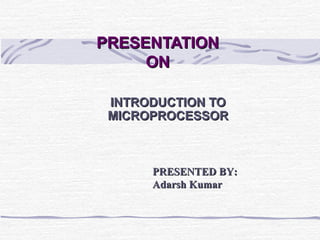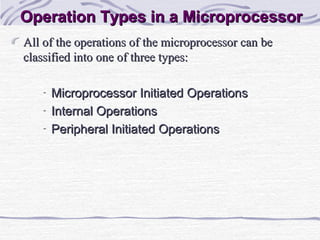The document is a presentation on an introduction to microprocessors. It defines a microprocessor as an electronic circuit that functions as the central processing unit (CPU) of a computer. It then discusses the main components and architecture of a microprocessor, including the timing and control unit, arithmetic logic unit, interface section, and register section. It provides examples of the 8085 microprocessor pin diagram and block diagram to illustrate these sections.




















